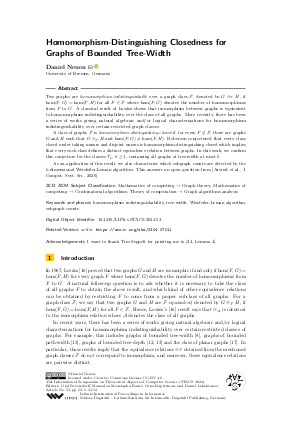@InProceedings{neuen:LIPIcs.STACS.2024.53,
author = {Neuen, Daniel},
title = {{Homomorphism-Distinguishing Closedness for Graphs of Bounded Tree-Width}},
booktitle = {41st International Symposium on Theoretical Aspects of Computer Science (STACS 2024)},
pages = {53:1--53:12},
series = {Leibniz International Proceedings in Informatics (LIPIcs)},
ISBN = {978-3-95977-311-9},
ISSN = {1868-8969},
year = {2024},
volume = {289},
editor = {Beyersdorff, Olaf and Kant\'{e}, Mamadou Moustapha and Kupferman, Orna and Lokshtanov, Daniel},
publisher = {Schloss Dagstuhl -- Leibniz-Zentrum f{\"u}r Informatik},
address = {Dagstuhl, Germany},
URL = {https://drops.dagstuhl.de/entities/document/10.4230/LIPIcs.STACS.2024.53},
URN = {urn:nbn:de:0030-drops-197630},
doi = {10.4230/LIPIcs.STACS.2024.53},
annote = {Keywords: homomorphism indistinguishability, tree-width, Weisfeiler-Leman algorithm, subgraph counts}
}

 Creative Commons Attribution 4.0 International license
Creative Commons Attribution 4.0 International license
